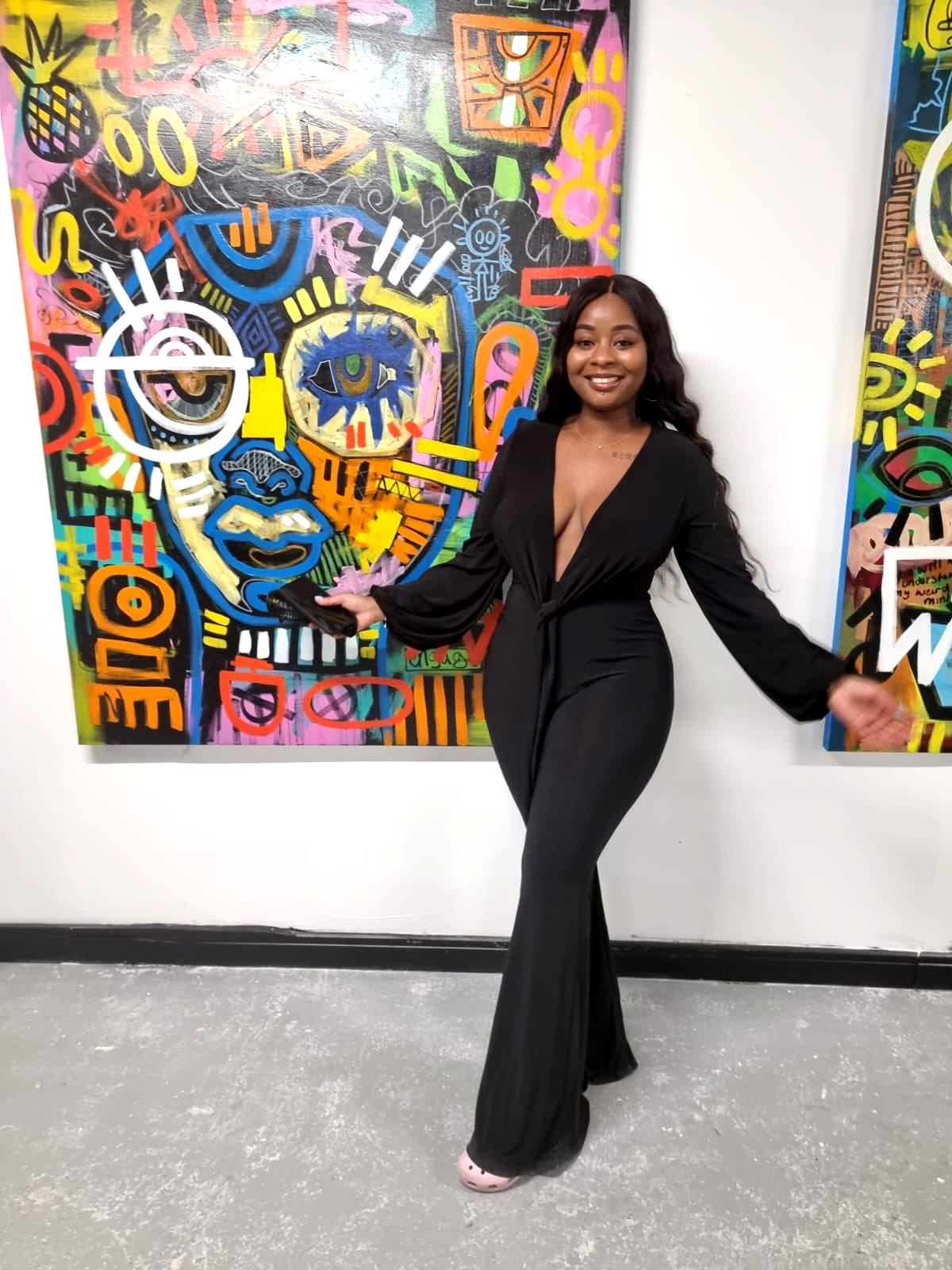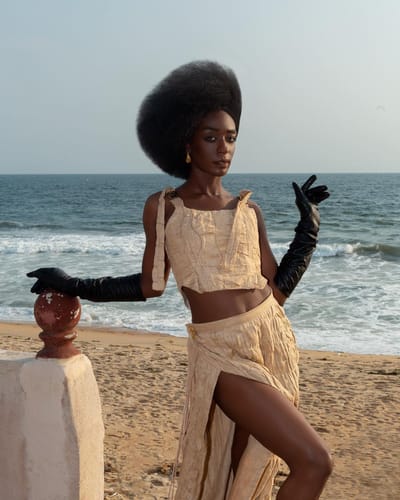We present to you the colourful world of Afro-expressionist Zimbabwean artist Charmaine Chanakira, whose creations bring to life the many rich cultural facets of Africa. In this brief chat with Charmaine Chanakira, we discussed the strokes and colours of Chanakira's masterpieces, exploring the story and cultural nuances that define her unique artistic voice.
Roots and Influences
Charmaine Chanakira's Afro-expressionism is deeply rooted in Zimbabwe's rich heritage and diverse experiences. Her work tells stories of connection to the land and its people through traditional music and vibrant African textiles. Chanakira's art invites audiences to witness the interplay between tradition and modernity, creating a visual dialogue that resonates with audiences worldwide.

By incorporating the rhythmic beats of traditional music and the vibrant colours of African textiles, her work reflects the rich cultural and historical influences of Zimbabwe. Read our brief chat below to see why colours play a huge role in her works.
What draws you to the vivid and vibrant colours in your Afro-expressionist art? What do these colours represent or symbolize for you?
In my waking life, I am very introverted. I am not the loudest person in a room and I tend to be okay blending in the background. You will probably always see me wearing black hiding away in a corner somewhere. But when I paint, I paint to be seen, I paint to be loud and I paint to be powerful. The colours I use are meant to represent me, they speak for me and say all the things my voice cannot carry.
How do you select the colours you use in a given piece? What special meaning or connections to African culture and identity do they have in your work?

I pick colours at random and hope they work together lol! And if they don’t, I will keep layering until I find a combination that works for me. I like to use white at the end to tie up all the madness and chaos, thus framing the work succinctly. I feel like the white holds everything together.
For me, colour is everything! It reflects my mood and my age when I am creating. I always say that I create with my inner child, so when I use colours like bright pink and yellows, that’s my inner child showing herself. These colours bring me back to my childhood and bring me comfort. I find my happy place in the colours I use. When I use deeper colours like greens, black, oranges and reds, they represent my African heritage, they ground me and bring me back home.






Some critics have noted the contrast between sombre subject matter dealing with struggle or oppression, yet your works utilize bright, lively colours. Can you discuss your thought process behind that dichotomy?
This is a difficult one to answer. I have been through so much and have experienced lots of things both traumatic and pleasurable. I see the world and the spaces around me as much greater and much bigger than I am. So, when I think of struggle, oppression or politics, I choose to see them through the lenses of a child.
There is so much information to take on, so much to process, so many questions left unanswered. Painting this all in black or dark colours will make this so much harder for my inner child to digest. I paint to heal her, so I paint through her lenses and her idea of the world. I paint optimistically, I paint for change and want to talk about hurtful things without them taking any power away from me.

The colours black, red, and green are often associated with African pride. Do you consciously try to incorporate that into your works?
I do not consciously use those colours in that way but I guess subconsciously that is what they represent to me. They remind me of home, and they ground me. Growing up, I had an identity complex which led me to shy away from my culture. It wasn’t ‘cool’ being African when I was in high school so it made it hard for me to openly celebrate my culture. After some time in therapy, I have managed to get back to my roots and I am now able to celebrate myself, my culture and my history out loud. I think the use of those colours in my artwork is a sort of apology to my ancestors for abandoning them in childhood.
Conclusion
As we conclude our exploration of Charmaine Chanakira's artistry, I hope like us you see why she does what she does. And join us to celebrate her as a visionary in the Afro-expressionism field. Through her work, she not only embodies Zimbabwean culture but also adds to the worldwide discourse on the ability of art to bridge divides and promote understanding.
Chanakira's ability to infuse contemporary issues with timeless traditions makes her a beacon in the world of African art, and we are happy to witness the beauty and depth she brings to the canvas.






